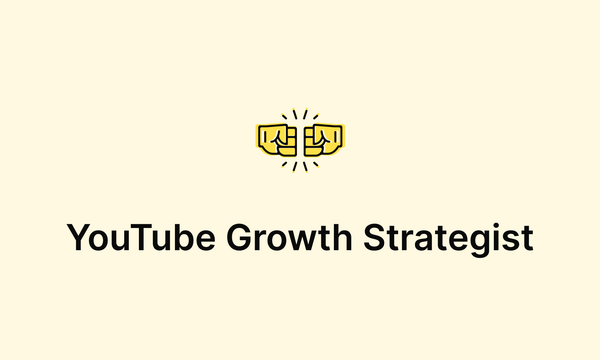Understanding the difference between growth and scale

When creators talk about building their businesses, the focus is usually on growth: more views, more followers, more revenue, more uploads.
Growth feels like momentum, and it is until every step forward demands an equal step up in hours and energy. That’s where growth peaks and scaling begins.
Growth adds. Scale multiplies.
Growth proves an idea lands. It shows that an offer, a format, or a partnership resonates. But most growth still relies on direct effort: another video, another launch, another brand deliverable.
Scale, by contrast, is a form of leverage. It’s the point where each new dollar or follower requires proportionally less of you because the way value is delivered has been redesigned to work without constant attention.
Signals you’re stuck in growth mode:
- Revenue climbs, but your workload climbs faster.
- Time off translates to an immediate dip in content output or anxiety about the dip.
- Each partnership, product, or series is built from scratch instead of running on a proven template.
- You feel busier without feeling measurably stronger or safer.
These aren’t failures. They are flags that the engine is powered by raw effort rather than systems.
What scale looks like for audience‑driven creators
- An evergreen product funnel, say, a signature digital download or course, continues selling long after the launch window closes.
- A sponsorship structure packages deliverables so one negotiation turns into a multi‑episode arc instead of one‑off ads.
- A membership community grows through recurring content, peer interaction, and live events that don’t hinge on you scripting every moment.
- A backlog of pillar content compounds reaches through SEO and algorithm momentum, attracting new viewers without additional filming.
In every case, your insight still drives the business, but the mechanism for delivering that insight is repeatable, documented, and eventually delegated.
How to shift from growth to scale
- Map your bottlenecks: editing queue, brand outreach, and customer support, and tackle one at a time.
- Systematize the most painful step first: create templates, standard operating procedures, or lightweight automation to remove friction without sacrificing quality.
- Transfer ownership where possible, whether that’s a part‑time editor, a fractional operator, or a scheduling tool.
- Track leverage as seriously as revenue: hours per video, margin per sale, days fully off each quarter. Those numbers reveal whether you’re truly buying back time.
Scale selectively
Not every pillar of a creative business scales, and that’s healthy. Flagship projects may always need your fingerprints. Aim to scale the majority of work that can be structured, so the pieces that can’t remain sustainable and enjoyable are instead exhausting.
Need help with scale?
Friends We Trust connects professional creators with vetted operators, systems architects, and financial strategists who specialize in turning raw growth into durable, leveraged scale. If you’re ready to build a business that works even when you step away for a week, we’ll introduce you to experts who can make it happen.




